I first started fly fishing with Tenkara rods seven or eight years ago—I found the simplicity attractive, given the industry trend at the time that demanded anglers have a full quiver of fly rods, reels with a number of spools ready to go and a fly box that looked more like carry-on luggage. There was something very appealing to me about wandering off the pavement with a lanyard that toted along a set of nippers, some tippet and maybe a dozen flies. And a Tenkara rod.
The “gear, gear and more gear” thing seems to have chilled a bit. It seems that manufacturers now are getting behind the idea of the “do-everything” $850 fly rod, with a reel that costs at least half as much. Throw in $100 for a high-end fly line, and, if you wade wet, you’re good to go for the price of a gently used drift boat.
Tenkara, meanwhile, has remained painstakingly simple. Rod, line, fly. All set.
Now, I’ll be the first to admit that I’ve never been a true Tenkara angler—I’ve never once fished a Tenkara fly, and I’ve gone a little overboard in terms of trying to land fish that I really have no reason casting to with a Tenkara rod. Results have been mixed, and it’s been a lot of fun to see exactly what Tenkara rods can handle. In recent years, I’ve heard from friends who’ve landed everything from carp to baby tarpon on Tenkara rods, and a few years ago in Saskatchewan, I landed a 28-inch pike and an 8-pound lake trout on a Tenkara rod. Both were a blast. Both probably fall under the “Don’t try this at home if you want to keep your Tenkara rod intact” category.
But I’ve also learned what Tenkara rods do very well, even if their manufacturers don’t necessarily market some of their more practical uses.
For instance, this past summer, my daughter and I took a pair of Tenkara Rod Co. Teton rods with us to fish for trout and char under the canopy of the Southeast Alaskan rainforest. I’ve fished the region before, and one of the most effective methods for catching big sea-run cutthroats and Dolly Varden is to drift egg patterns or pegged beads—high-stick style—through the riffles when the salmon are running. If I’ve learned one thing about Tenkara over the years, it’s that it might be the best nymphing rod out there, particularly in close quarters.
And my daughter is a full-on Tenkara convert—she picked one up as a kid, and I’m not sure she’s willingly picked up a rod with a reel attached to it since. She can fly cast like a champ, but if she has her choice, it’s always Tenkara.
So it came as no surprise that, when we arrived at a clear-water tributary to the Stikine River outside of Wrangell this past summer, Delaney immediately grabbed one of the Teton rods and strung it up with a pegged bead. In minutes, before the guide or I could even get our traditional rods rigged up, she was plucking feisty Dollies from the depths, simply by drifting the bead through likely runs. The average fish was probably in the 12-inch range, but she did catch a couple of beasts that pushed 20-inches, and the Teton rods performed admirably. Even after accidentally hooking a surging pink salmon, the Teton hung in there and she was able to get the fish to spit the hook with no damage to the rod or the line.
What works
This isn’t unique to the Tenkara Rod Co. products—all recent entries into the U.S. Tenkara market telescope down to manageable lengths that make them easy to pack and easy to carry. The Teton comes in a very handsome tube, though, and when it’s fully compacted, it’s only 20 inches long. For fishing, it telescopes out to 12 feet, kind of the sweet spot for Tenkara rods, in my opinion. Longer rods can improve reach, but in tight spots and in cover, it matters to be as compact as possible.
The rod also handled well in some pretty interesting conditions. We fished some pretty big water in Southeast, and we fished some smaller, more intimate streams. The weather was generally iffy, with rain squalls each day, and, no matter where we fished, we had to wander a bit to find trout and char (the salmon were a bit behind schedule, so the fish weren’t as easy to find as we had hoped). That meant we had to hop on bear trails, or bushwhack over scree slopes and wander through the old growth. It was painstaking easy to simply retract the rod, wrap the line around the handle and go.

As for fishing, the Teton was exactly what I hoped it would be. It was a high-sticking machine. At one point, on the trib to the Stikine, the guide we fished with looked at me and asked if I thought I was cheating with the long, supple rod. With its 12-foot reach, I was able to pluck Dolly after Dolly off the bottom the river, including some very nice fish that put an appreciable bend in the Teton, and rewarded me with that sing-song sound a tight Tenkara line makes as it’s strummed by the current.
In deeper water, I added a bit of split to the tippet, just to get the fly down, and it handled and cast the weight just fine, leaving me to believe that it would be an excellent dry-fly rod (something we didn’t try). Nymphing with the rod was a joy, though. It took a simple upstream cast to get the fly in the zone, and, on the rare occasion when a trout or char didn’t come calling, it took a single back-handed flip to the get fly back in the feeding again.
What doesn’t work
I always struggle to find weaknesses in products that I have essentially hand-picked for their strengths (drifting eggs and beads for Dollies), and in this case, it’s no different. The Teton did exactly what I wanted it to. If I had to find a nit to pick, I’d say that, for some reason, the butt cap that keeps the telescoping sections from falling out of the end the rod was always coming loose. I don’t know if that’s because of how we handled the rods when we punched through devil’s club and high-bush blueberry stands, or if the butts came loose in the rain. But we dropped butt caps on both rods, and we lost one for good, unfortunately. We screwed the cap we salvaged on extra tight and didn’t have any more problems the rest of the trip.
The good news there, though, is that replacement parts for the rods are pretty affordable—a new butt cap for the Teton costs $5 through the Tenkara Rod Co. website.
Final word
If you’re a Tenkara convert, or you’re thinking about giving Tenkara a shot, the Tenkara Rod Co.’s Teton rod is worth a look. The Teton outfit—rod, line, tube, sock and a few flies retails at $159. The rod by itself is $129, which makes it more than comparable in the increasingly competitive Tenkara market that, against all predictions, is growing and more and more relevant in the fly fishing space as time passes.
Something else to consider. Tenkara is a great teaching tool for new fly fishers. My kids both learned to fly fish using Tenkara, and they both prefer Tenkara to traditional rods, simply because they’re very simple. And my daughter has claimed ownership of the Teton, which makes my son insanely jealous.




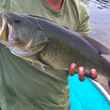
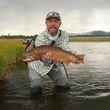

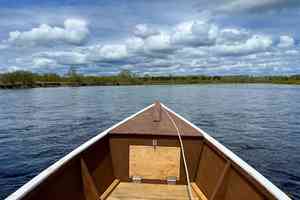


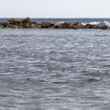

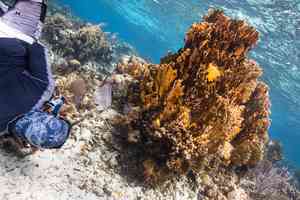







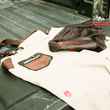




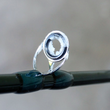

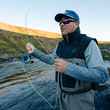


Comments
Steve Pappa replied on Permalink
I just recently purchased 2 "Teton's" for myself and my wife...had a blast fishing "The" South Fork last week here in Idaho. We both love the rods from Tenkara Rod Co, which are very well made....I will be getting their "Owyhee" model next.
Pages